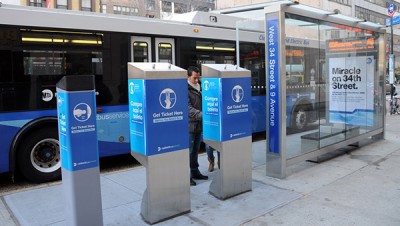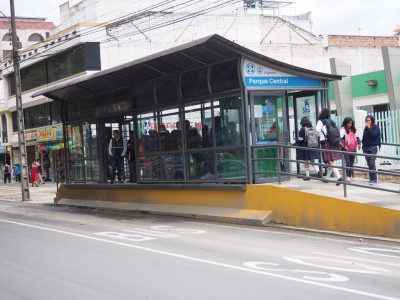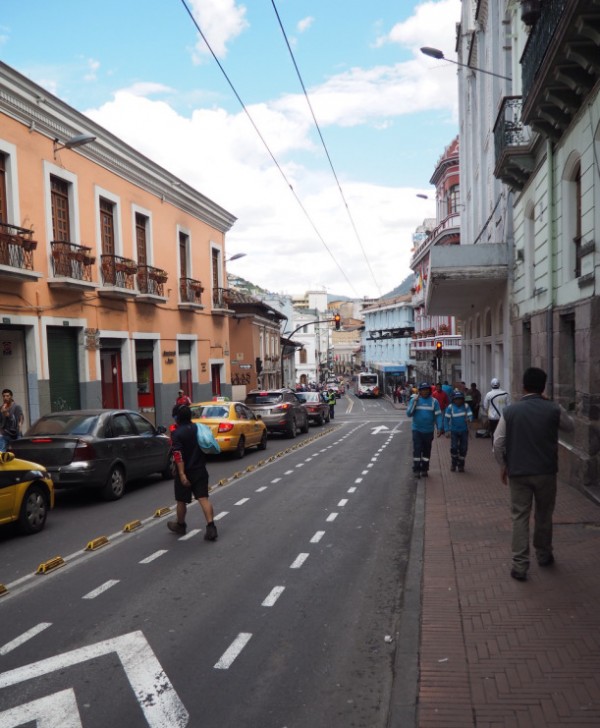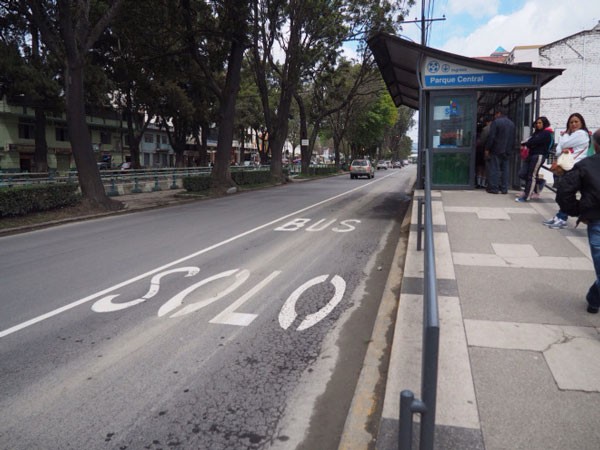
Canadian municipalities are confronted with an interesting predicament – our cities are growing at unprecedented rates. For municipalities, this population growth means greater strains on our transportation infrastructure, more time lost to congestion and longer commutes. As the private automobile becomes less and less convenient for the daily commute or other trips, Canadians are looking at transit as a viable alternative. What’s interesting about this predicament is that its somewhat of a chicken and egg situation – people will only use transit if its useful and reliable. Yet, in Canada our mobility systems have been underfunded for so long that it is anything but that.
Under the Federation of Canadian Municipalities (FCM) , the large cities are consistently calling for reliable and consistent funding for new transit lines, increased service hours and increased frequencies of buses (1). While this is great in the long term, our cities desperately need relief now. For example, the Broadway corridor in Vancouver is one of North America’s busiest corridors and patrons are often passed up by full 99 B-Line buses (2). The 99 B Line alone moves over 50,000 riders daily. The proposed solution is an expensive cut and cover Subway, which won’t be operational until 2021 at the earliest (assuming funding comes through).
To the East, in Calgary, the radial C-Train is often at crushing capacities once it reaches the core during peak time. With 310,700 average daily boardings, its the 3rd busiest Light Rail Line (LRT) in North America. While long term investments in high capacity transit systems are needed, we need to relieve this pressure build-up of decades of neglect today, not tomorrow. How can we do this?
Good solutions lie South, not with our American friends but with South American cities like Loja, Quito or Bogota. Faced with the inability to afford the high capital costs of brand new LRT systems, these cities got resourceful imitating the Bus Rapid Transit (BRT) system originally built in Curitiba, Brazil. An articulated BRT provides the same capacity and reliability as a LRT system but for a fraction of the cost. Through observing and using these systems, a few ways surface to improve the performance of hamstrung transit systems in Canada with minimal investment. The following two improvements are the low hanging fruits that transit agencies can pick. These improvements require minimal investment, but can help agency’s secure increased reliability, shorter running times, and potentially increased capacity and frequency.
Dedicated Right of Way

The most effective way to improve transit performance is to designate dedicated rights-of-way. In North America buses are typically integrated with regular traffic, reducing the efficiency of bus service as it must compete for road space with private automobiles. Buses are often carrying 6-8 times more people than the private automobiles next to them, it is only fair they are given 6-8 times the space. Designating a lane specifically for buses will ensure that they do not have to compete with private automobiles for precious space.

What’s more, as BRT systems in Quito, Loja and 34th Ave in New York City show, you don’t need elaborate and expensive barriers to provide designated bus only lanes. A simple coat of paint and some police enforcement is sometimes all that is needed. The cost of this option is disproportionately small when compared with the results – transit reliability, efficiency and performance increase, simply by carving out a chunk of road space for buses. Dedicated rights-of-way will ensure that transit runs on time more often. Increased speeds and reliability can entice more people to use transit, as indicated by a recent study (4). If there are specific problem mixing areas, barriers can be added in those specific spots.
All Door Boarding and Off Board Fare Systems

Another major source of delay occurs with the boarding procedure. When people can only board the bus via one door, and the driver has to verify the payment of every single patron, this takes up a lot of time. All door boarding and off-board fare payment systems are solutions that can mitigate these delays and improve transit efficiency. All-door boarding means that instead of permitting boarding only via the front door (as typical in most bus systems in North America), boarding and disembarking is permitted via all doors, similar to most light rail systems in North America. Since most transit systems rely on a fare box recovery system, this is usually only effective if you have an off-bus (off-board) fare collection system. Again, this is similar to what you would see in a typical North American light rail system. A recent experiment in Los Angeles demonstrates the effectiveness of all door boarding, reducing the boarding time in half (3).


While some cities went with expensive upgrades to their stations, the systems in Loja and Quito suggest you do not need to do this. A simple off-board fare payment zone is enough to permit all door loading. 34th Avenue in New York City also shows how simple an off-board system can be. New York uses fare machines on the sidewalk and the honour system similar to what is already currently done with light rail systems across North America.

When it comes to implementing either option, a number of thoughts come to mind. If funding is limited, then the biggest impact can be achieved by focusing on critical areas with a “low investment-high return on investment” ratios. Most transit systems run into delays and performance issues in the core, therefore, limited funding improvements should be focused in the core or at specific high demand stops. If you have specific stops with high boarding and disembarking volumes such as at Universities, malls or in the city core, then start by creating off-board fare systems at those stops which can allow all door boarding and alighting. The same can be done by dedicating bus only lanes through specific high volume corridors through the core.
In Canada, many of the conversations around transportation tend to focus on big, expensive projects. This expends considerable political and economic capital. We need to look at cheaper and simpler options that can offer high levels of service at a fraction of the cost. Focusing less on the need to improve the system all at once will allow for the incremental growth our mobility systems need now, not in the future.
Sources:
(1) http://www.theglobeandmail.com/news/politics/canadian-cities-lobby-ottawa-for-transit-funds/article23680380/
(2) http://bc.ctvnews.ca/broadway-bus-pass-ups-unacceptable-ubc-president-1.2263923
(3) http://www.scpr.org/news/2015/06/16/52440/boarding-at-the-back-la-metro-s-experiment-to-spee/
***
Slow Streets is a Vancouver-based research group providing evidence for slower & better streets.


8 comments
Interesting and certainly easily tested.
My only concern, for Toronto at least, is the lack of bike lanes shown in your examples.
Given our very aggressive bikers, ignoring road rules and pedestrians I can see them abusing these lanes at the expense of the buses, their drivers and passengers. Any thoughts?
Hi Layton,
Thanks for your commentary. There is a concept called a ‘floating bus stop’ which allows for a physical separation between people walking, people cycling and those traveling by transit. Here’s one iteration of the concept: http://www.urbanmovement.co.uk/uploads/1/4/1/9/14194615/1909552_orig.jpg
Interestingly, Calgary announced last week that its doing the exact opposite of what the article suggests – its ditching a proposed 50 kilometer BRT line in favour of going straight to LRT along the same route.
Hello Mike,
Thank you for your commentary. We are not advocating for the removal of permanent solutions such as LRT or full fledged BRT. However this article is pointing out when funding is short, we still need solutions. As you will notice Calgary just received $1.5 Billion in funding, hence why they immediately scrapped plans for the BRT and replaced it with a LRT. If you have assured funding we recommend that you build out a system to the best as possible, but when funding is limited, we still need results now and it is irresponsible to put off solutions until the perfect solution, funding or plan is available.
The cost difference between BRT and LRT is not as big in Canada as in South America though. A big part of the operating costs for transit is wages, which are much lower in South America, and LRT requires fewer drivers than BRT.
Acquiring the right of way is not always obvious either. If the transit service has to acquire the ROW itself, then that’s a big cost that makes BRT quite expensive and not that much cheaper than LRT. If you get the ROW for “free” by taking the space for cars, that can be fine if the BRT has very high ridership but otherwise it’s a bit tricky. Yes, a bus carries more people than cars, but even if it carries 20 times more (rather than 6-8 as you said) – but the bus only comes every 15 min and a car comes every 6 seconds (relatively typical for a car lane in the daytime that’s near capacity), a lane for cars will be moving 7 times more people by car than by bus. So in that sense giving buses their own lane only makes sense on very very busy bus routes or uncongested roads with excess capacity. Or at least in places where you can reasonably expect very high use of the BRT. However, where transit demand is that high, it wouldn’t have to be much higher to make it worthwhile to just go with LRT.
Other measures like signal priority and all door boarding and off board fare payment, and possibly queue jump lanes would make sense for corridors with more moderate use.
Hello Nick, thank you for commentary. We are not comparing BRT to LRT, we are comparing buses that mix with traffic to installing bus only lanes so that buses do not have to mix with traffic. So in this term the driver operating costs is still the same. As far as the ROW itself, the city often owns the right of way, similar to how they can dedicate the ROW for a bike lane they can also dedicate the ROW for a transit lane. The issue with your cars every 6 seconds statement is the space issue, people in cars compared to in a bus takes up 18 times more space. You cannot create more space in built-out cities. You could build a tunnel, but you should ask Boston or Seattle how that is going. Other cities are tearing down freeways because they are prohibitively expensive in their life-cycle maintenance costs. The only solution is to use the limited space that we have more efficiently, you can move more people per hour in the same space by transit, cycling or walking than driving. You are absolutely right that we are not saying that there should be bus lanes on all roads, but we should be doing so where warranted, but we are not. Funding for transit in Metro Vancouver has dried up. The city of Edmonton new Metro line started talking about planning in 2006 but its full consultation and build-out did not happen until now a full 9 years later. This does not remove the necessity for mobility improvements during that time. As a better measure it would be better to do quick changes that achieve results now rather than waiting for the perfect plan or funding. This is not saying that we don’t think long term planning is necessary, we do. We need to compliment large scale planning efforts with results driven solutions for problems now, not tomorrow.
One of the overlooked issues in these discussions is not the mode of transportation, but the stations/stops themselves. Off-board fare payment is a little step, but a recognition of our climate and other comfort issues is more important.
If asked, most commuters will tell you they prefer to use a subway. I suspect that has a lot to do with not standing freezing in a flimsy shelter waiting for a bus, possibly in the middle of the night with security concerns.
You could easily switch vehicles (say bus or streetcar) and have happy commuters if they had a warm, safe place to wait. Imagine bus stations (not stops) at major arteries where you could wait inside, buy your fare, have some security either through monitoring or even a live attendant that could also answer questions. In suburban and semi suburban areas they would also be useful for pick-up and drop-off by private vehicles just like subway stations are today.
That’s a hell of a lot cheaper than laying lots of rail or tunnels and would provide a large portion of the experience people look for in ‘heavy’ rail solution.
I look at the new Viva bus system in York region and see the missed opportunity immediately. Those open air island bus stops in the middle of busy highway 7 are totally out of step with our climate and the communities they are supposed to serve. What a waste.
These are interesting discussions. I’d like to read source #4, is it missing in the article?
“Increased speeds and reliability can entice more people to use transit, as indicated by a recent study (4). “